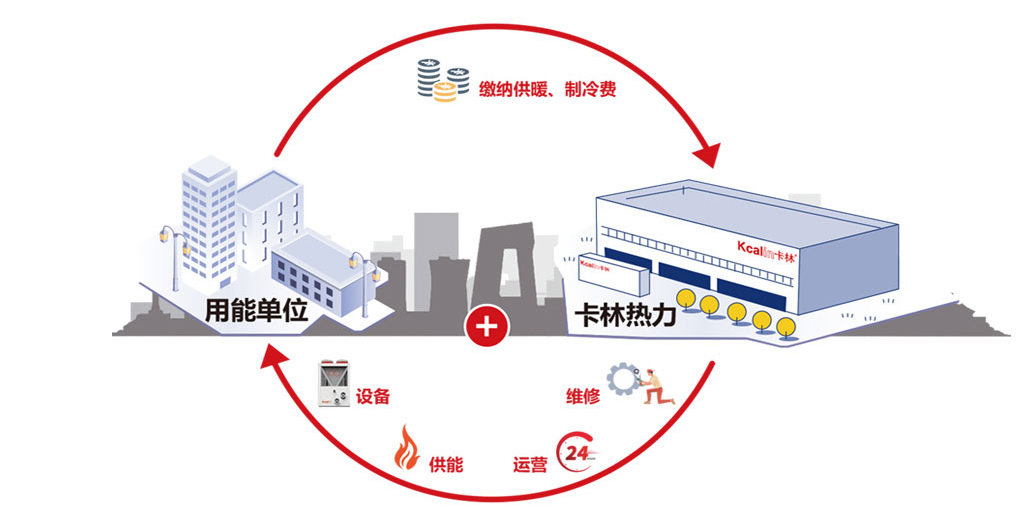As a new type of heating equipment, air source heat pumps are receiving increasing attention due to their high efficiency, environmental friendliness, and energy efficiency. So, how does an air source heat pump achieve heating?
Air source heat pumps utilize the reverse Carnot cycle principle to extract low-grade thermal energy from the air and convert it into high-grade thermal energy by consuming a small amount of electrical energy, achieving heating. This process is similar to the working principle of air conditioning, but its main purpose is heating rather than cooling.
Refrigerant cycle: The important component of an air source heat pump is the refrigerant cycle system. The refrigerant absorbs heat from the air in the evaporator and becomes gaseous; Subsequently, under the action of the compressor, the gaseous refrigerant is compressed, and the temperature and pressure increase; Next, the refrigerant enters the condenser and releases heat into the heating system, becoming liquid; The refrigerant is depressurized and cooled through the expansion valve, and then enters the evaporator again, starting a new cycle.

Energy Conversion: Throughout the process, the air source heat pump converts low-temperature and low-pressure refrigerant into high-temperature and high-pressure gas through the operation of the compressor, and transfers the heat extracted from the air to water or air for heating. Because air source heat pumps mainly utilize the heat in the air, their energy utilization efficiency (COP) is usually high, which can achieve the goal of energy conservation and environmental protection.
Heating process of air source heat pump
Heat absorption: Air source heat pumps absorb heat from the air through an external air heat exchanger (i.e. evaporator). Even in the cold winter, the air still contains a certain amount of heat energy, which is absorbed by the refrigerant and evaporates into gas.
Heat increase: Gaseous refrigerant is compressed in the compressor, causing a sharp increase in temperature and pressure. This process requires electricity, but the energy consumed is much less than the heat generated, so air source heat pumps have high energy utilization efficiency.
Heat release: High temperature and high pressure gaseous refrigerant enters the condenser and exchanges heat with water or air in the heating system, releasing heat. After releasing heat, the refrigerant condenses into a liquid state and enters a low-temperature and low-pressure state again through the expansion valve, entering the next cycle.
Heating medium transmission: The heat released by the air source heat pump is transmitted to the heating end through a pipeline system, and common end forms include underfloor heating, water heating, and air heating. Underfloor heating transfers heat through underground pipelines, evenly heating the ground and ensuring comfortable indoor temperatures; Water heating uses hot water circulation to dissipate heat, suitable for households and commercial buildings; Wind heating heats indoor air through air flow and is suitable for places with large spaces.
The advantages of air source heat pumps
Energy saving and environmental protection: Air source heat pumps mainly utilize the free heat energy in the air, requiring only a small amount of electrical energy to drive, with high energy utilization efficiency, and can reduce energy consumption and carbon emissions of traditional heating methods.
Stable and reliable: Air source heat pumps can operate stably in environments ranging from -25 ℃ to 43 ℃, with a wide range of adaptability. Its main components have a long lifespan, simple maintenance, and high reliability.
High comfort: The air source heat pump heating process is smooth, with uniform temperature, and does not produce the dryness and discomfort of traditional heating methods. Especially the underfloor heating system can provide a comfortable and warm experience.
With the increasingly prominent issues of energy shortage and environmental pollution, air source heat pumps, as an efficient and environmentally friendly heating technology, have broad development prospects. Its application scope includes various places such as residential homes, commercial buildings, schools, hospitals, etc., especially suitable for areas with cold winters and long-term heating needs.
Air source heat pumps extract heat from the air through a refrigerant circulation system and convert it into high-grade thermal energy, achieving efficient heating. Its energy-saving, environmentally friendly, stable, and comfortable characteristics make it an important development direction for future heating technology. With the continuous advancement of technology and the popularization of applications, air source heat pumps will demonstrate their advantages in more fields, providing people with a more comfortable and environmentally friendly living environment.







Comment